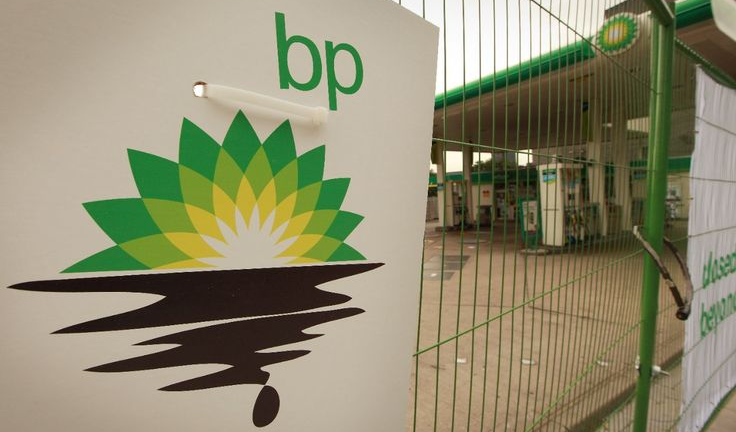In an era marked by climate change and an urgent need for sustainable energy solutions, the global energy landscape is undergoing a dramatic transformation. British Petroleum (BP), one of the world’s largest oil and gas companies, finds itself at a crossroads. With increasing pressure from investors, governments, and the public to reduce carbon emissions and pivot towards renewable energy sources, BP is taking significant steps to navigate this new reality. This article delves into BP’s growth strategy, its current operations in the fossil fuel sector, and how the company aligns its ambitions with global climate goals.
The Evolution of BP
A Brief History
Founded in 1909 as the Anglo-Persian Oil Company, BP has evolved from a national oil company to a major player in the global energy market. For over a century, BP has been synonymous with oil and gas exploration, production, and distribution. However, as the world grapples with the consequences of climate change, BP’s traditional business model is being challenged like never before.
Recent Developments
In recent years, BP has made headlines with its ambitious plans to transition towards cleaner energy. The company’s new vision was encapsulated in its 2020 announcement, where it committed to becoming a “net-zero” company by 2050. This pledge includes reducing its oil and gas output by 40% by 2030, a significant shift for a company whose profits have historically relied on fossil fuels.
The Current State of the Fossil Fuel Industry
Global Demand for Oil and Gas
Despite the push for sustainability, global demand for oil and gas remains robust. The International Energy Agency (IEA) projects that while the share of renewables will increase, fossil fuels will continue to dominate the energy mix in the near term. The transportation sector, particularly aviation and shipping, is still heavily reliant on fossil fuels, complicating the transition to greener alternatives.
BP’s Role in the Market
As one of the leading oil producers, BP’s actions significantly impact the global energy market. The company continues to invest in oil and gas projects, recognizing that while the transition to renewables is necessary, the world will still rely on fossil fuels for decades to come. BP’s growth strategy reflects a dual approach—continuing to supply fossil fuels while investing in sustainable energy technologies.
BP’s Growth Strategy
Diversifying Energy Sources
To address the challenges posed by climate goals, BP is diversifying its energy portfolio. The company is investing in renewable energy projects such as offshore wind farms, solar power installations, and hydrogen production. BP’s goal is to have 50 gigawatts of renewable capacity by 2030, a significant increase from its current capacity.
Innovations in Technology
BP is also investing in new technologies to reduce the carbon footprint of its existing operations. Carbon capture and storage (CCS) technology, which captures carbon dioxide emissions from industrial processes and stores them underground, is one area where BP sees potential. The company is working on several CCS projects that aim to mitigate the environmental impact of its fossil fuel production.
Strategic Partnerships
Collaborations with other companies, governments, and research institutions are central to BP’s strategy. By partnering with stakeholders across various sectors, BP aims to accelerate the development of clean energy technologies and drive innovation. These partnerships enhance BP’s ability to leverage expertise and resources, fostering a collaborative approach to achieving climate goals.
Challenges in the Transition
Balancing Profitability and Sustainability
BP faces the daunting challenge of balancing profitability with sustainability. Investors are increasingly scrutinizing companies for their environmental, social, and governance (ESG) practices. BP must demonstrate that it can maintain profitability while transitioning to a cleaner energy model. This requires careful management of its existing assets and investments in new technologies.
Regulatory Pressures
As governments worldwide implement stricter environmental regulations, BP must navigate a complex landscape of policies and incentives. Compliance with regulations can impact profitability and operational efficiency. Additionally, BP must adapt to varying regulatory frameworks in different countries, which can complicate its global strategy.
Market Competition
The renewable energy market is becoming increasingly competitive, with numerous players vying for market share. BP faces competition not only from other oil and gas companies but also from renewable energy firms that specialize in solar, wind, and battery technologies. To succeed, BP must leverage its existing expertise and resources while positioning itself as a leader in the transition to sustainable energy.
The Future of Fuel and BP’s Role
Evolving Consumer Preferences
Consumer preferences are shifting as more people prioritize sustainability. The demand for cleaner energy solutions and electric vehicles (EVs) is rising, prompting traditional energy companies like BP to adapt. BP’s growth strategy includes a focus on electric vehicle charging infrastructure and battery technologies to meet this changing demand.
Renewable Energy Integration
As renewable energy sources become more prevalent, integrating them into the existing energy grid is crucial. BP is investing in smart grid technologies and energy storage solutions to facilitate the transition to renewable energy. By ensuring reliable energy supply and grid stability, BP can position itself as a key player in the future energy landscape.
The Role of Innovation
Innovation will be critical in shaping the future of fuel. BP’s commitment to research and development is vital for discovering new technologies that can drive efficiency and reduce emissions. The company is exploring a range of solutions, including advanced biofuels, synthetic fuels, and next-generation batteries, to diversify its energy offerings.
Aligning with Climate Goals
Commitment to Net-Zero Emissions
BP’s commitment to achieving net-zero emissions by 2050 is a bold step towards aligning with global climate goals. This target requires the company to rethink its operations, invest in new technologies, and engage with stakeholders to drive change. BP’s progress toward this goal will be closely monitored by investors and environmental groups alike.
Collaboration with Governments
To achieve meaningful progress on climate goals, collaboration between companies and governments is essential. BP is actively engaging with policymakers to promote policies that support renewable energy and carbon reduction. By working together, the public and private sectors can create a more favorable environment for sustainable energy development.
Measuring Impact
Transparency and accountability are critical as BP pursues its climate goals. The company must establish clear metrics to measure its progress toward net-zero emissions and report on its efforts regularly. By doing so, BP can build trust with stakeholders and demonstrate its commitment to sustainability.
Conclusion: BP’s Future in a Changing Landscape
As BP navigates the complex landscape of the energy transition, its growth strategy reflects a commitment to balancing fossil fuel production with the pursuit of sustainable energy solutions. The company’s investments in renewable energy, innovative technologies, and strategic partnerships position it as a leader in the industry.
While challenges remain, BP’s proactive approach to addressing climate goals and evolving consumer preferences highlights its potential to thrive in a changing world. The road ahead will require adaptability, innovation, and collaboration, but BP’s commitment to sustainability could pave the way for a brighter, greener future in the energy sector.
In conclusion, the journey of BP’s growth amid climate goals signifies a pivotal moment for the energy industry. As the world shifts towards a sustainable future, BP’s actions will play a crucial role in shaping the energy landscape and contributing to global climate initiatives.


